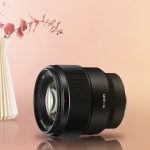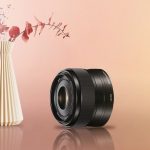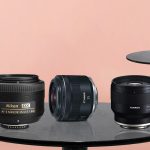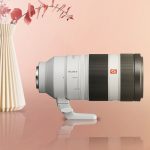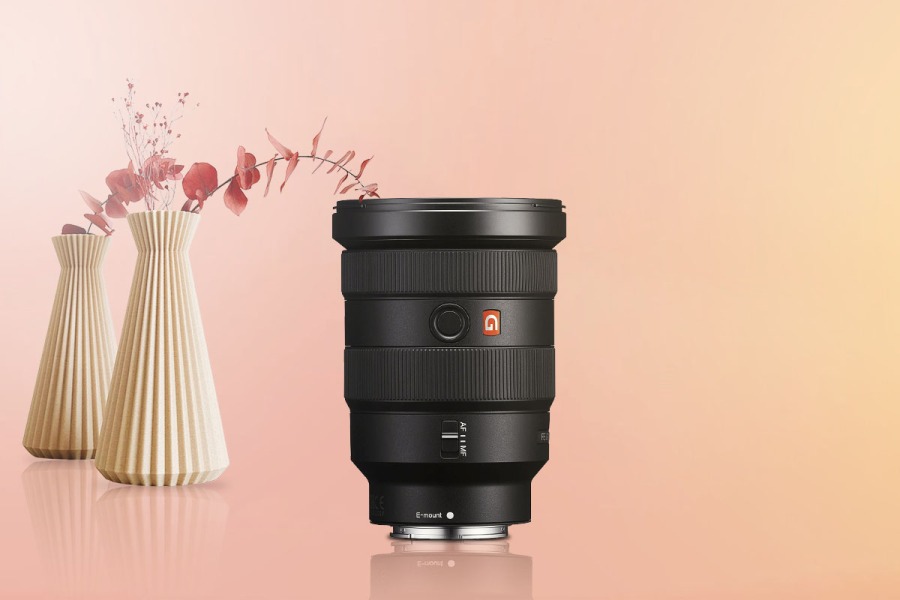
I personally travel a lot, and the Sony FE 70-200mm F4 G OSS lens is definitely the best when it comes to traveling. I’ve tested many different models over the years, and when im not traveling, i find myself using the Sony SEL35F18 35mm f/1.8 almost all the time. I will talk about each lens i tested and what they are good for in the following sections.
The Sony A5100 is a fantastic, entry-level mirrorless camera that packs a plethora of useful features on one side, whereas, on the other, employs a very compact and lightweight construction which makes it be an ideal option for beginners who will be spending hours on shooting prior to becoming professionals!
Furthermore, regardless if you’re a beginner, semi-professional, professional or simply an enthusiast, you may likely know that having quality lenses is crucial in photography since lenses can drastically improve the camera’s performance so that your captured content will always look pleasing.
That’s why, in this article, I will be focused on offering you the 5 best lenses for Sony A5100, and you be the judge whether they are worthy of your attention, since all of them will be different in terms of type, and price, but the thing that all of them will share will be the quality!
The 5 Best Lenses For Sony A5100
Photo | Name | Best For | Check Price |
Sony E-mount 30mm F3.5 (SEL30M35) | Best For Macro Photography | ||
Sony SEL35F18 35mm f/1.8 | Best Multi-Purpose Lens | ||
Sony 18-200mm F3.5-6.3 (SEL18200LE) | Best For Smooth Zoom & Focus | ||
Sony Carl Zeiss Sonnar T E 24mm F1.8 ZA | Best All-Rounder | ||
Sony FE 70-200mm F4 G OSS | Best For Travelers |
5. Sony E-mount 30mm F3.5 (SEL30M35)
The Sony SEL30M35 is a budget-friendly, macro lens that can be considered as a highly useful, the second lens for your Sony A5100 because they allow you to shoot a variety of different photography while ensuring quality output without spending a fortune in order to have this pleasure!
To begin with, the design of this lens is very simple since it consists of 7 elements divided in 6 groups which are furtherly enhanced by an ED element and three aspherical elements on one hand, whereas, on the other, its lightweight, silver-finished body will enrich the beauty of your A5100 camera and provide you a truly convenient shooting sessions without feeling fatigued, even if you’ve been shooting for a longer period of time!
Additionally, if you take a closer look at this lens, you will instantly notice its metal barrel that is followed by a ribbed manual focus ring, and when we combine all these things into one, I can easily say that the overall build quality is solid and this lens is indeed easy to handle!
In terms of the performance, one of the biggest highlights regarding the SEL30M35 is its ability to produce a higher level of sharpness at full aperture, and in fact, users have praised this lens a lot due to its effectiveness to be a real “performer” in the center of the field!
But, Sony has done yet another good job, and that’s regarding the distortion. Namely, even though the SEL30M35 is budget-friendly, still, this unit does an amazing job in dealing with distortion and once you have an opportunity to shoot with your A5100 while having this lens attached, you will see what I’m talking about!
Last but not least, aside from shooting photos that will have accurate color representation, you can also achieve excellent results in terms of video capture, due to the fact that this model holds an internal, stepping motor with rear-focusing design.
Therefore, this lens is all about versatility and convenience and that’s why, I would recommend you to consider it as your next purchase, because it will not affect your budget a lot, but the benefits you will get in a return a indeed numerous!
4. Sony SEL35F18 35mm f/1.8
The Sony SEL35F18 35mm f/1.8, or simply known as the SEL35F18, is a prime-fixed type of lens that combines an attractive look, strong performance, and a price that is affordable for a variety of different photographers, and these three attributes has lead this lens to receive numerous positive critiques! But, what else can you expect from it? Let’s get started right away and find out!
Speaking of the design, this model is very compact, it measures just 1.8 x 2.5 (H, D), weighs around 5.4 ounces and it is nothing less than ideal for APS-C mirrorless cameras including your Sony A5100.
If we dig a bit deeper, we can find out that the optical design is composed of 8 elements that are divided into 6 groups, as well as we can see the presence of an extra-low dispersion element and two aspherical elements. The last two elements are very important because their purpose is to boost the contrast as much as possible, and minimize the occurrences of spherical aberration!
Furthermore, both, the focusing ring and the outer barrel are made of aluminum alloy, whereas, the mounting plate is crafted by a chromed metal, and this is very good since you will not recognize any considerable difference in terms of the look and performance of the lens, even if you’ve been using it for a fairly long period of time.
Performance-wise, the SEL35F18 performs nicely in most situations, and although most of the lens available in this price range do not have any kind of stabilization, this one has an optical stabilization for both, photos and videos! This definitely comes handy in practice, because you will be stunned by the photo and video results, but especially by the results of photography done in dim light conditions!
Those who’ve been shooting landscape photography with this lens attached on their Sony A5100, have reported to me that the SEL35F18 outputs a very sharp performance, and therefore, the best results may be achieved at f/4, f/5.6 and f/11. Although this is just their opinion, I’d advise you to check it out and after that, you can conclude whether the final outcome suits your personal preferences or not.
Moving on, the distortion is non-existent most of the time, and what’s even better is that the SEL35F18 tames ghosting and flare nicely which is yet another proof that says a lot regarding the quality of this lens!
To conclude, If you’re keen on shooting landscape photography where each photography will look lifelike and will be filled with numerous details and strong contrast, then the SEL35F18 would be a really good option for you!
3. Sony 18-200mm F3.5-6.3 (SEL18200LE)
The SEL18200LE is a dream come true for photographers who love to shoot wildlife and sports photography with their Sony camera, including the owners of Sony A5100, and if you’ve been searching on the Internet, you’ve probably seen this lens a lot of time. Well, there’s a reason behind the success, and my duty is to reveal it for you!
From a design perspective, the SEL18200LE is basically an all-in-one superzoom lens that has a solid build construction that consists of a metal lens mount, a plastic filter ring and up to seven-rounded diaphragm elements that will help you get the best possible out-of-focus backgrounds!
For your information, the focusing ring is made of rubber, has large ribs and it is about 1/2-inches wide, and what’s interesting is that the ring will rotate to the infinity in either direction without stopping at all, and by doing this, it will assign the camera into the manual focusing mode.
Now, what about the sharpness? This lens will dramatically boost the performance of your camera because even if you opt to use its widest aperture f/3.5 and its widest angle of 18mm, imagery will look unbelievably good and I think that you will recognize the potential of this lens from the moment you capture your first photo!
Moreover, the autofocus operation is very quick, and effective, some users have reported to me that it took less than a second before you get the entire range of focus, and honestly, I really like this!
The second good thing about the autofocus is that it is very quiet, and except for shooting photos, you will have an opportunity to shoot videos without any problem at all!
I’d also like to mention that those who’ve been shooting under bright daylight claim that the image quality was nothing less than outstanding, and given its huge focal range that allows you to have huge freedom in terms of composing your image, I think that this lens will suit you more than fine!
However, like most mirrorless lenses, this one suffers from one thing and that’s its lack of direct mechanical connection to the optics, but, either way, considering its reasonable price and strong performance, I think that Sony has got away with it!
To summarize, I strongly recommend you consider the SEL18200LE as your next purchase, and if you ever decide to purchase it, you will assure yourself of its tremendously strong capabilities!
2. Sony Carl Zeiss Sonnar T E 24mm F1.8 ZA
The Sony Carl Zeiss Sonnar T E 24mm F1.8 ZA has been on the market for a fairly long period of time, but, even today, it is still being widely used by the owners of the Alpha line of APS-C mirrorlress cameras, thanks to its uncompromised performance that will make each photo look unique, exactly as you’d like!
Design-wise, this lens is large, it measures 2.6 x 2.5″ ( H, D ), weighs around 7.9 ounces and boasts a solid, alloy body that is accompanied by a barrel made of metal, and a wide, ridged metal manual focus ring which is the only control available.
Unfortunately, you won’t find a depth-of-field scale/infrared index/distance scale, and personally, I think that Sony could have done a better job considering the price tag of the lens. Either way, there are other features that will guarantee you a nearly flawless performance, so let’s move on.
For your information, the angle view of this lens is set at 61-degrees given its focal length of 24mm, and it can focus as close as 6.2 inches, which is still satisfying since, at its closest working distance, it will ensure that images will be projected onto the image sensor at 1:4 size. This means that it has a good, if not the best macro capability.
Furthermore, those who’ve been shooting with this lens claim that the image quality is unrealistically sharp at f/1.8, but even if you’re stepping down to f/4, f/2, or f/2.8 the performance is absolute gold as well, and I’m sure that you will notice this as well!
In addition, If you’ve been curious regarding the distortion, well, I have good news for you. In general, distortion is non-existent, but in any case, RAW photographers can effectively remove the vignette look by using software such as Lightroom CC, whereas, JPG shooters can apply an in-camera correction if they recognize some dimness.
Before we end, there’s yet one more thing I would like to mention. One of the best things about owning this lens is not only the top-notch image quality but also the given opportunity to have spectacular results when shooting at a wide aperture. To be more precise, while shooting at a wide aperture you can make your subject pop by making the background blurred.
It’s also pretty good lens at taking photos of real estate, so if you are in that field, this lens can serve you well.
Overall, even though this unit has some flaws, still, the Sony Carl Zeiss Sonnar T E 24mm F1.8 ZA is more than a highly suitable candidate to become a part of your shooting arsenal, especially if you love to shoot with a wide-angle prime lens that will never disappoint you!
1. Sony FE 70-200mm F4 G OSS
The Sony FE 70-200mm F4 G OSS is ideal for Sony Alpha cameras, since this is an interchangeable lens that is greatly used by owners of such cameras, and if you’ve had a chance to witness by yourself, how does this lens perform like, I’m sure that you were more than satisfied! If you haven’t, well, now you will have a better insight regarding the quality of this fantastic lens!
This unit is very well-designed, it is sturdy, but at the same time, it is comfortable to hold and I find it indeed visually pleasing because of its classy, matte-white color. Sony has implemented a weather-resistant metal exterior which is furtherly supported by a rubber focus, zoom ring, and from the very beginning, you already know that you will never feel restricted in terms of shooting because you can take this lens anywhere you go and shoot under a variety of different weather conditions!
At the front, aside its electronic focusing ring, you can also find three buttons that sit around the barrel, and I particularly like the inclusion of these buttons, mainly because of the fact that they stand for focus lock and will help you a lot in terms of having comfortable grip regardless of the orientation of the lens itself! Sounds interesting, right?
Now, let’s take the design aside for a minute, and talk about the performance, since you’re here to find out everything regarding the performance.
The Sony FE 70-200mm F4 G OSS is spectacularly sharp. Some people have reported to me that they never had difficulties getting fantastic results throughout the apertures, starting from 70mm at f/4, f/5.6 -f/16, and all the way up at 100m to apertures that range from f/4, f/16 and f/22. Yes, this lens is indeed sharp!
Moreover, Sony has included an extra-low dispersion glass with the intention to ensure that your images will always have strong contrast and that they will not suffer from chromatic aberration even at large-aperture settings, whereas, the Nano AR coating will be there to suppress reflections when you shoot outdoors so that your images will always be filled with strong clarity.
In the end, feel free to experiment and shoot the type of photography style you love the most, because this lens is versatile because you will be able to focus on closer details, shoot landscape photography, cityscape, street photography and more, without any problems, since the results are excellent. In other words, everything you capture within the 70-20mm range will fascinate you!
In conclusion, the Sony FE 70-200mm F4 G OSS is a must-have, versatile, telephoto lens that is capable enough to improve your shooting experience greatly, and do not hesitate to check it out and feel the instant difference that is brought to you by using this lens!
You Might Also Be Interested In:
- Best Cameras For eBay Sellers
- Best Cameras For Macro Shots
- Best Cameras For Film Students
- Best Cameras For Concerts
Sony A5100 Lens Buying Guide
Choosing a product takes time, patience, effort, and requires knowledge so that you can prevent being regretful of the purchase in the future. In this part of the article, I will bring you some important information and tips regarding the aspects on which you should pay attention and get the best possible results once you start shooting.
Angle of view & Focal length
These two things are essential to understand. The angle of view is basically a measure of how much of a scene a lens can allow, or take in, and this is expressed in degrees. On the other hand, the focal length is expressed in millimeters, and if you’ve had an opportunity to listen to some photographers that talk about a lens` focal length, well, the thing about which they are concerned is exactly the angle of view.
For your information, macro lenses are usually in the 35-100mm range, ultra-wide-angle lenses are set under 24mm, the standard is between 35-70mm, and telephoto lenses are those lenses that stretch above the measurements of standard lenses.
Types
The two, most famous types of lenses are prime and zoom. Zoom lenses are known for their versatility because they will let you easily frame your subjects without even having to move, whereas, prime lenses are known for having way better optics and are known for outputting stronger low-light performance.
One tip here. Always prioritize those lenses that are specifically designed for your camera. For instance, If you own a Sony camera, then look for lenses made by Sony, etc, because most of the time, the lenses of third party sellers/manufacturers may be incompatible with your camera.
Of course, you can categorize lenses intro micro-categories too, such as astrophotography lenses, real estate lenses, landscape lenses etc, but the main ones are Zoom & prime.
Aperture
Aperture is one of the members of the “holy trinity” of photography, after the ISO and shutter speed. The aperture concept is often defined as the opening in a lens through which light passes in order to enter the camera. In other words, the aperture is an opening through which light travels. So, why it is important? Well, if you choose a lens with a larger aperture, then since it will allow more light to pass, your photos will look brighter, and vice-versa.
Handling
Depending on the type of lense, lenses can be heavy, moderate or lightweight, so, this is solely up to you, whether you need a lightweight lens for shoot street photography, moderate lense for landscape photography/portrait, or heavy lens for everything else.
Frequently Asked Questions (FAQ)
Q: How much do lenses for Sony A5100 cost?
A: This is a very general question, and therefore, I won’t be able to bring you the most precise question, because the price is affected by multiple factors including quality and type of the lens itself. Hence, the price may range between $100-$2000+.
Q: Do beginners require having lenses?
A: Well, you’re not obliged to have a lens, however, having one won’t hurt because lenses are essential components in photography and cameras because they can ensure high-quality results.
Q: What’s the best lens for Sony A5100?
A: As was the case with the first question, this question is also hard to answer because everything depends on your readiness to invest money in the first place. Therefore, the most precise answer you can get to this question would be that the best lenses, in my opinion, are included in this article.
Q: Is Sony A5100 worthy of having?
A: Of course it is, in fact, this is one of the most widely used mirrorless cameras on the market, and at the same time, this camera is often the first choice for beginners who wouldn’t like to spend a lot of money but would still expect quality performance. And, Sony A5100 exactly has these attributes!
Conclusion
Finally, I’m sure that you’ve recognized the potential of all the aforementioned lenses because after I’ve made an in-depth analysis of each of them, you’ve gained a better understanding regarding what can you expect from them in practice. Therefore, feel free to choose the one that suits your preferences and budget the most, because you can’t go wrong no matter which one you choose!
Also, if you have additional questions or if you make an actual purchase, feel free to share your experience with me, because I’m always there to keep my audience informed about everything that is connected with cameras!

Camera Tester & Reviewer
I spend most of my time taking photos & videos of everything in sight. Yes, I am a stock photographer and I’ve probably taken more than 700,000 photos so far.

Camera Tester & Reviewer
I spend most of my time taking photos & videos of everything in sight. Yes, I am a stock photographer and I’ve probably taken more than 700,000 photos so far.










